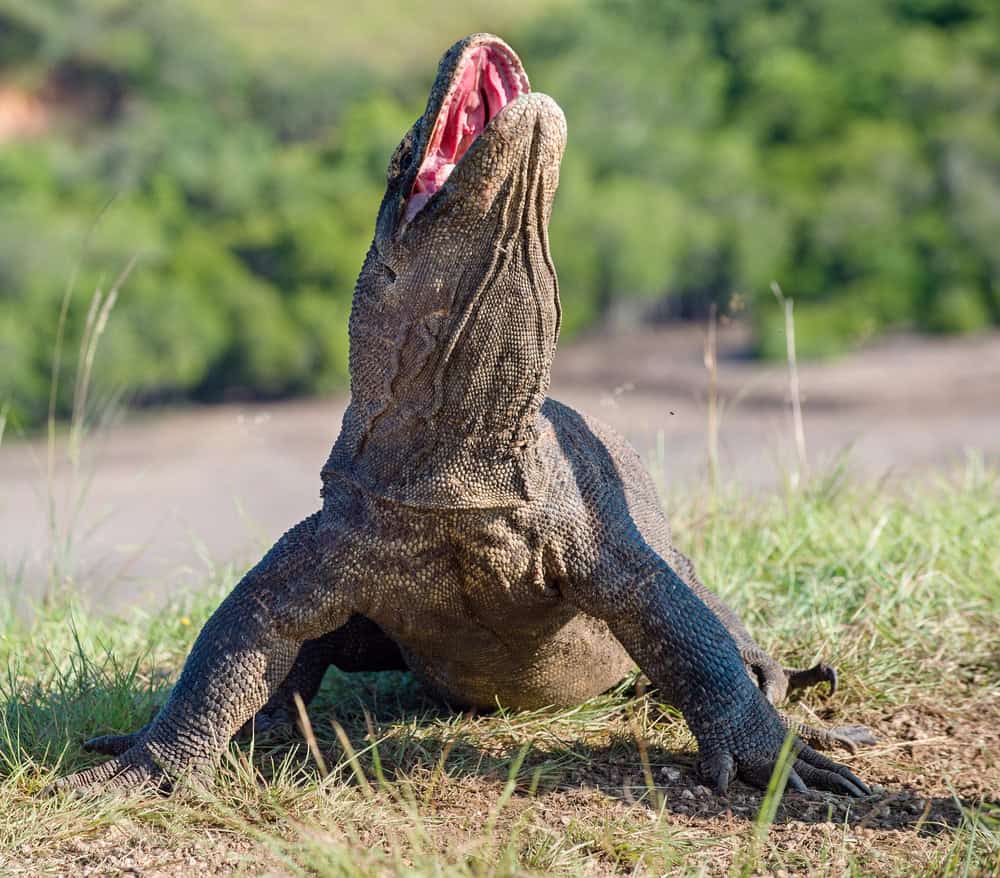The Komodo dragon, a spectacular relic from a prehistoric era, has captured our imaginations with its sheer size, strength, and survival instincts. Renowned as the world’s largest lizard, these marvelous creatures endlessly fascinate scientists and nature enthusiasts alike. Our journey into the realm of Komodo dragons will uncover the story of the largest Komodo dragon ever recorded—an exemplar of nature’s wonders.
The Origins of Komodo Dragons

The Komodo dragon, scientifically known as Varanus komodoensis, is native to the Indonesian islands of Komodo, Rinca, Flores, and a few others. Its discovery dates back to the early 20th century when rumors of “land crocodiles” prompted Dutch explorers to unveil the mysteries of these islands. A contender for the title of the last remaining giant lizard species, Komodo dragons share a lineage that stretches back millions of years, providing crucial insights into reptilian evolution.
The Habitat and Behavior of Komodo Dragons

Komodo dragons inhabit a variety of environments, from dry savannahs to lush tropical forests. They are apex predators, using their superb hunting skills and senses to capture prey. These solitary creatures spend much of their day basking in the sun to regulate their body temperature, while their nights are spent in burrows dug into the ground to conserve body heat.
Record-Breaking Size: The Largest Komodo Dragon

The largest Komodo dragon ever recorded was an astonishing 10.3 feet (3.13 meters) in length, tipping the scales at approximately 366 pounds (166 kilograms). This colossal lizard was discovered on the island of Komodo itself, a testament to the island’s thriving natural habitat conducive to such extraordinary growth. While individual records may vary, it stands as a remarkable representation of the species’ potential.
Komodo Diet: Carnivorous Giants

Komodo dragons are carnivorous, consuming a variety of prey ranging from small rodents to hefty buffaloes. Their diet is indiscriminate, consisting of carrion and live catches including deer, pigs, and even scavenging from other predators. The incredible size of some individuals is often attributed to a rich, nutrient-dense diet available within their ecological niche.
Physiology: Strengths and Capabilities

With a muscular build, strong tail, and robust limbs, Komodo dragons exemplify formidable physical prowess. Their sharp claws and serrated teeth enable them to effectively tackle prey. A singular bite from a Komodo dragon inflicts not just physical trauma but introduces venom, which debilitates the prey by inducing rapid blood loss through anticoagulant properties.
Social Structure and Territoriality

Komodo dragons are primarily solitary animals, establishing and defending territories unyieldingly. They communicate through body language and vocalizations, particularly during the mating season. Males exhibit aggressive behavior to compete for territory and mates, sometimes leading to dramatic duels marked by posturing and physical combat.
Breeding and the Role of Females

Komodo dragons reproduce via both sexual and asexual means—a process called parthenogenesis. Females capable of this genetic feat allow populations to rebound in low-density situations, ensuring species survival. After mating, females lay approximately 20 eggs, which endure a gestation period of about eight months before hatching.
Conservation Status and Challenges

Listed as vulnerable, Komodo dragons face threats from habitat loss, climate change, and human encroachment. Conservation efforts on the Indonesian islands include protected areas and environmental education programs aimed at safeguarding these majestic creatures. Preserving their habitat and limiting human interference are crucial for their continued existence.
The Role of Komodo Dragons in Their Ecosystem

As top predators, Komodo dragons play a fundamental role in maintaining the ecological balance of their habitat. They help control the populations of their prey, thus preventing any one species from dominating and disrupting the ecosystem. This balance ensures the health and diversity of their natural environment.
Interaction with Humans: Myths and Realities

Komodo dragons have inspired both fear and fascination, leading to myths that cast them as mythical creatures. Instances of aggression towards humans are rare, typically resulting from provocation or territorial intrusion. In truth, these lizards often shy away from human contact, preferring isolation within their domain.
Research and Education: Learning from Komodo Dragons

Ongoing research strives to uncover more about the biology and behavior of Komodo dragons. Studying their DNA, reproduction, and interactions provides invaluable data for conservationists and scientists alike. Education initiatives inform the public about the importance of protecting these enigmatic creatures and their environments.
The Future of Komodo Dragons

The continued survival of Komodo dragons hinges on human efforts to preserve and protect their habitats. Through a combination of scientific research, habitat conservation, and public awareness, we can ensure that these magnificent reptiles continue to thrive on our planet. Their enduring legacy is a reminder of the awe-inspiring diversity and resilience of life on Earth.
In summary, the Komodo dragon remains one of the most intriguing inhabitants of our natural world. The largest Komodo dragon ever documented serves as a potent symbol of the species’ inherent grandeur and adaptability. As we further our knowledge and commitment to conservation, these formidable lizards will continue to captivate and educate future generations.
- Simple Ways to Keep Your Pumpkins Safe from Squirrel Attacks - August 23, 2025
- Could Wildlife Tourism Be Doing More Harm Than Good? - August 23, 2025
- The Hidden Life of Tide Pool Creatures - August 23, 2025

